
Printed circuit boards (PCBs) have evolved from basic to advanced. Early products only required basic single- or double-layer FR4 or aluminum PCB boards. As electronic devices became smaller, more powerful, and smarter, the demand for PCBs with higher current capacity, better thermal management, and complex functionality grew. So advanced printed circuit boards come in.
Advanced PCBs are not a replacement for basic PCBs, and both serve corresponding products. When products require miniaturization, high reliability, or special electrical and mechanical properties, advanced PCBs become essential. From HDI, rigid-flex, and thick-copper designs to PTFE and ceramic PCBs, advanced PCBs are customized to meet the high-performance needs of mid- to high-end applications.
At PCBONLINE, we focus on one-stop advanced PCB manufacturing, providing engineering support and turnkey services to bring your innovative products to life.
Part 1. Advanced PCB vs Basic PCB
The main difference between advanced and basic PCBs lies in their materials, complexity, and performance capabilities.
Basic PCBs are usually single- or double-layer FR4 or aluminum PCB boards. They are cost-effective and suitable for consumer electronics, toys, LED lighting, and general-purpose applications.
Advanced PCBs are designed with high-performance substrates, multiple layers, or complex mechanical and electrical structures. They can handle high power, high speed, and high-density circuits that basic PCBs cannot support.
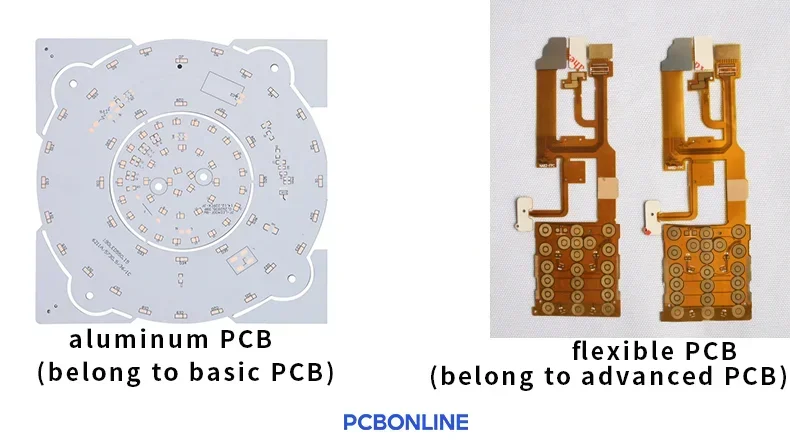
For example:
A simple LED light only needs a single-layer aluminum PCB.
A parking assist sensor module for cars, however, requires a high-frequency PTFE or ceramic PCB with precise impedance control.
When your product demands greater current capacity, miniaturization, thermal management, or advanced signal performance, advanced PCBs are the right choice.
Part 2. What are Advanced Printed Circuit Boards?
Advanced PCBs include a wide range of circuit boards that go beyond the standard FR4 and aluminum types. Below are the most common advanced PCBs and their features:
1. Ceramic PCBs
Ceramic PCBs include aluminum nitride PCBs and aluminum oxide PCBs. In extreme environments such as space rockets and spacecraft, boron oxide PCBs can also be used. PCBONLINE can use various technologies to manufacture ceramic PCBs, such as direct plating copper (DPC), thin film, thick film, and LTCC.
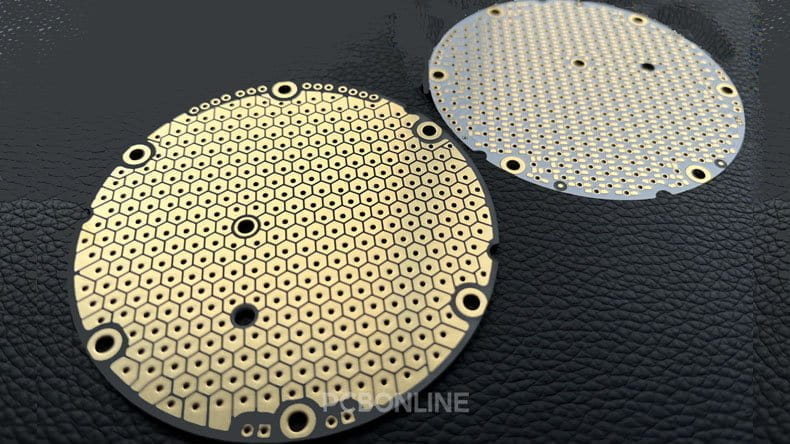
- Usually made from materials like alumina (Al₂O₃) or aluminum nitride (AlN).
- Offer excellent heat dissipation, low thermal expansion, and high-frequency performance.
- Usually designed to be single-layer for the best manufacturing yield rate and thermal dissipation.
- Ideal for power modules, RF applications, and high-temperature environments.
2. PTFE (Teflon) PCBs
PTFE PCBs are high-frequency PCBs. PCBONLINE provides them with 6GHz to 24GHz, 77GHz, and embedded antennas.
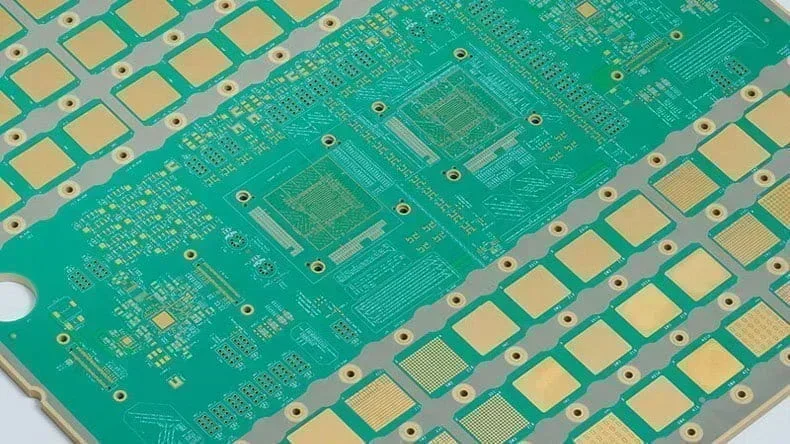
- Use PTFE material with glass or ceramic fillers for high-frequency performance.
- Very low dielectric loss, stable at GHz-level signals.
- Widely applied in aerospace, radar systems, base stations, communications, and military applications.
- Can be made from 4 to 24 layers at PCBONLINE.
3. Copper-core PCBs
PCBONLINE provides copper-core PCBs that use copper as the substrate material. Their thermal conductivity is better than that of aluminum PCBs but not as good as that of ceramic PCBs. However, if the thermal is conducted directly from the thermal-generating components to the copper substrate, the PCB thermal dissipation is the best — 398W/mK as copper!
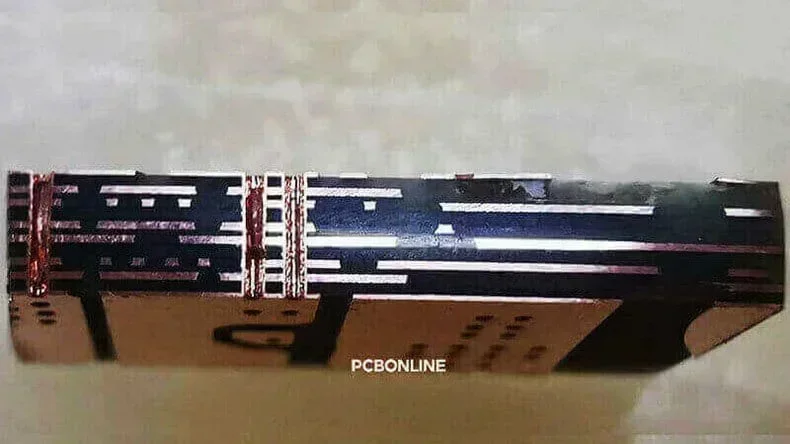
- Feature a copper substrate to improve thermal management.
- Used in power electronics, automotive lighting, and high-power industrial equipment.
- Typically 1 or 2-layer designs. But PCBONLINE can make them up to 8 layers (thermoelectric separation).
4. Flexible PCBs (FPCs)
Flexible PCBs are light and flexible, used for applications requiring 3D flexibility or allowing only small spaces and weight. PCBONLINE can provide 1 to 6-layer flexible PCBs, including the transparent ones.
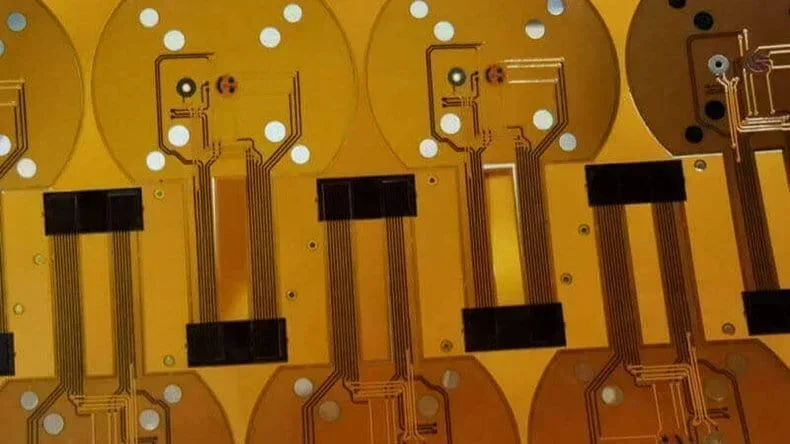
- Made of polyimide or polyester substrates.
- Used RA or ED FPC copper foil, depending on the bending frequency requirements.
- Bendable, lightweight, and space-saving.
- Commonly used in wearable devices, medical probes, and compact consumer electronics.
5. Rigid-Flex PCBs
A rigid-flex PCB is essentially a PI flexible PCB using RA copper, and then laminated with FR4 PCB outer layers, with the unwanted FR4 areas removed by laser. PCBONLINE provides them with 2 to 24 layers.
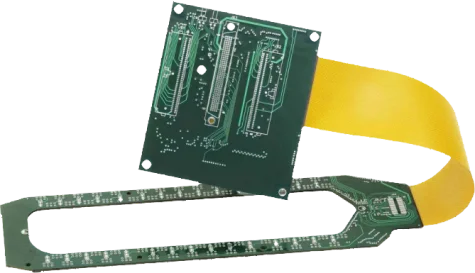
- Combine rigid FR4 layers with flexible layers.
- Allow 3D assembly and reduce connectors, improving reliability.
- Applied in wearable, aerospace, medical implants, and military devices.
6. Multilayer FR4 PCBs
Multilayer PCBs are made by alternatingly laminating various prepreg and copper foil layers and finally drilling the plated through holes.
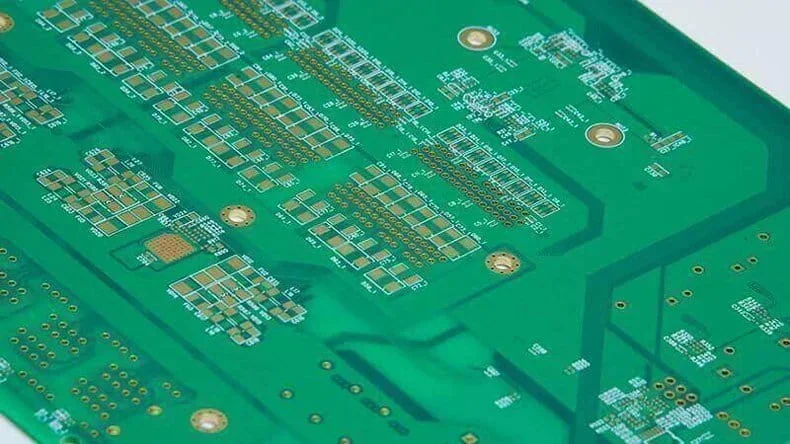
- Consist of multiple FR4 layers (4–40+ layers).
- Allow complex routing, high-speed signals, and dense component integration.
- Standard choice for computers, communication systems, and industrial controllers.
7. HDI (High-Density Interconnect) PCBs
PCBONLINE provides HDI PCBs of 4 to 64 layers, with an average of 20 electrical connections per square centimeter on both sides, and the conductor width and spacing are less than or equal to 100 microns..
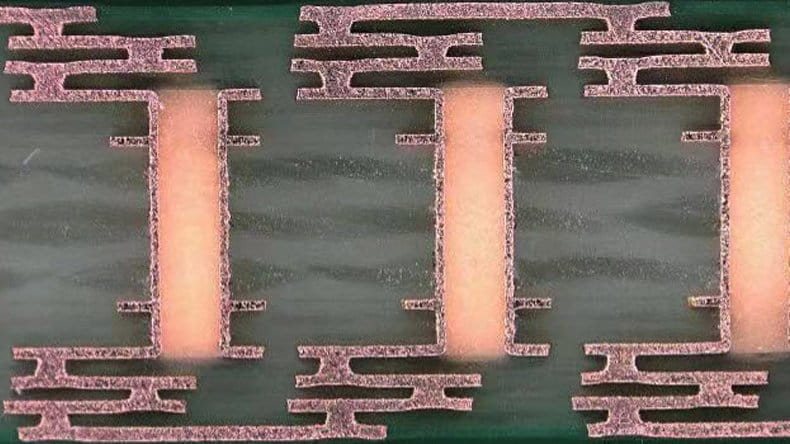
- Include microvias, buried vias, and blind vias for ultra-compact designs.
- Support fine-pitch BGAs, CSPs, and advanced semiconductor packaging.
- Essential for smartphones, tablets, high-speed servers, and IoT devices.
8. Other Advanced PCBs
Besides the above advanced PCBs, PCBONLINE can also fabricate and assemble PCBs with special requirements, such as thick-copper, with PCB busbars, and embedded components.
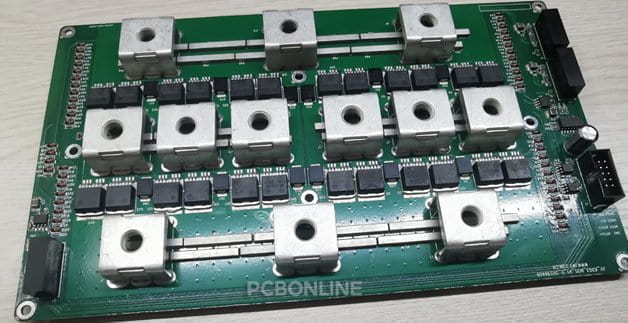
- Thick-copper PCBs (>3oz): Handle large currents for power electronics and automotive applications.
- PCBs with copper busbars: Provide extra conductivity and thermal management for high-current systems.
- Embedded components PCBs: Integrate passive or active components into the board, reducing space and improving reliability.
Each of these advanced PCBs is manufactured with strict process controls at PCBONLINE, ensuring both performance and durability.
Part 3. Applications of Advanced Printed Circuit Boards
Advanced PCBs are essential in industries where performance, safety, and reliability cannot be compromised. Some key application fields include:
Aerospace and defense: Radar systems, avionics, satellites, and military-grade electronics rely on ceramic, PTFE, and rigid-flex PCBs.
Medical devices: Flexible and rigid-flex PCBs are used in surgical instruments, imaging systems, and implantable devices.
Telecommunications and 5G: PTFE, HDI, and multilayer PCBs enable high-speed signal transmission with minimal loss.
Automotive electronics: Copper-core and thick-copper PCBs support electric vehicle battery systems, LED headlights, and control units.
Industrial and power electronics: Ceramic and thick-copper PCBs are widely used in power converters, inverters, and high-current controllers.
Consumer electronics: HDI and multilayer PCBs are crucial for smartphones, laptops, and wearables.
Two in-house laboratories: HDI and multilayer PCBs are crucial for smartphones, laptops, and wearables.
Meeting high demands: Multiple lamination cycles for complex designs, via-in-pad with copper filling for BGA/CSP packages, high layer counts with excellent reliability, and strict impedance control for high-speed signals
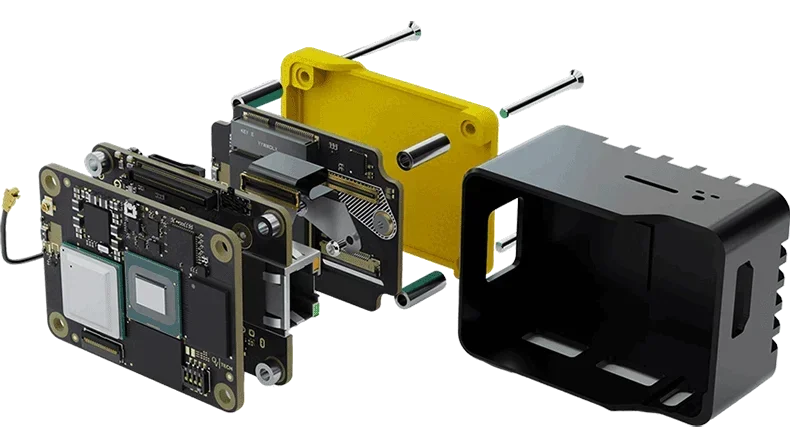
With advanced PCBs, today's cutting-edge technologies are possible.
Part 4. Order Advanced Circuit Boards — Email Quote from PCBONLINE
If your project requires advanced PCBs, you need a professional, one-stop manufacturer. PCBONLINE provides high-quality, custom advanced circuit boards for mid- to high-end applications.
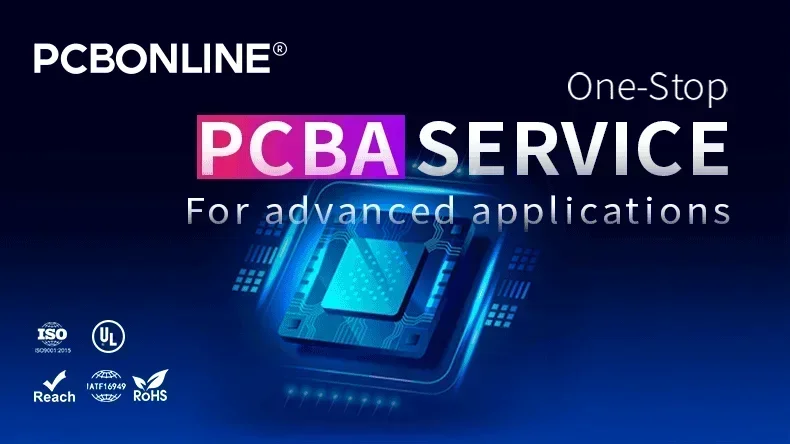
Founded in 2005, PBONLINE has two large advanced PCB manufacturing bases in Jiangsu and Jiangxi Provinces, and one PCB assembly factory in Shenzhen. It is a privately owned company that is ISO-verified.
PCBONLINE provides advanced PCB fabrication, PCBA assembly with component sourcing, and box-build assembly for system-level integration, from prototypes to mass production.
PCBONLINE is a source factory manufacturer focusing on advanced printed circuit boards and offers affordable, advanced PCBs.
No matter what quantity of boards you want, we prioritize quality, certified with ISO 9001:2015, ISO 14001:2015, IATF 16949:2016, RoHS, REACH, UL, IPC-A-600 Class 2/3, and IPC-A-610 Class 2/3.
PCBONLINE provides free engineering support for design optimization, DFM analysis, stack-up design, and reliability assurance.
Whether you need prototype development or mass production, we ensure reliability, precision, and cost-effectiveness.
Over two decades, PCBONLINE has served many advanced PCB and PCBA projects, such as electric vehicle charging stations, industrial transformer main boards, air conditioning central systems, military radar PCBs, medical PCBs, etc. And we have served many leading companies as below.
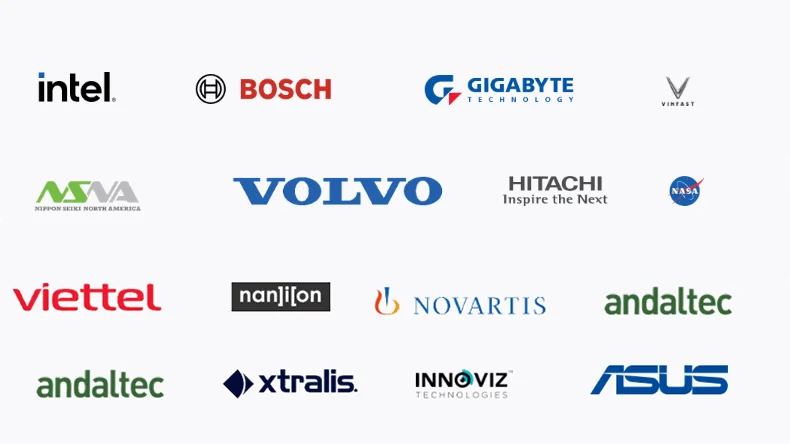
To order your advanced PCBs, simply email PCBONLINE at info@pcbonline.com with your Gerber files, BOM, and requirements. Our team will quickly provide you with a quote and engineering support.
Conclusion
Advanced printed circuit boards feature higher complexity than standard PCBs. They meet the exact needs of demanding applications. From high-frequency communication to high-power systems, from aerospace to medical devices, advanced PCBs ensure performance, reliability, and innovation. With PCBONLINE as your partner, you can confidently bring your advanced electronic products to life.
PCB Assembly from PCBONLINE.pdf
PCB fabrication at PCBONLINE.pdf




